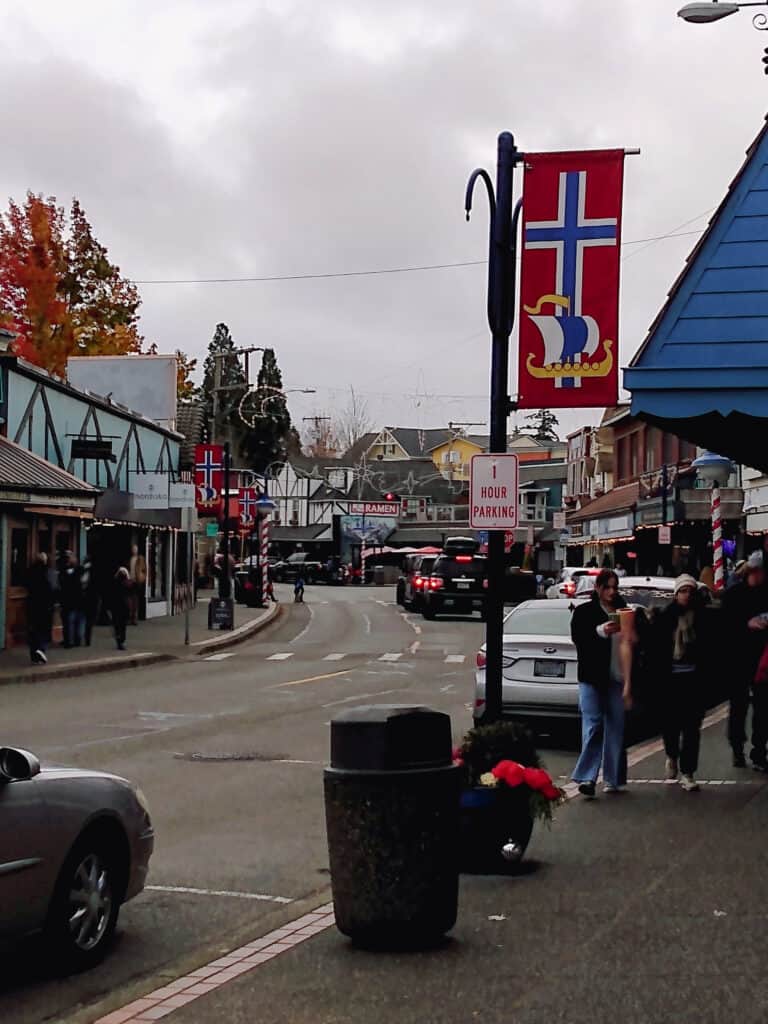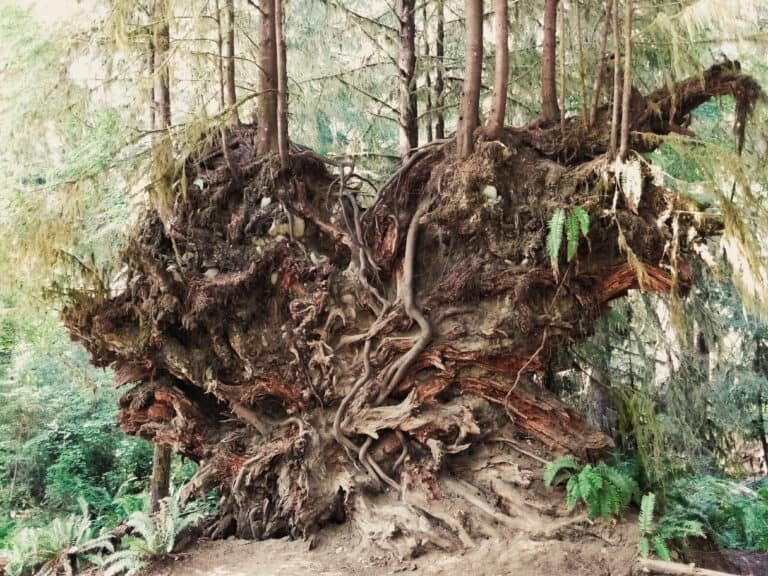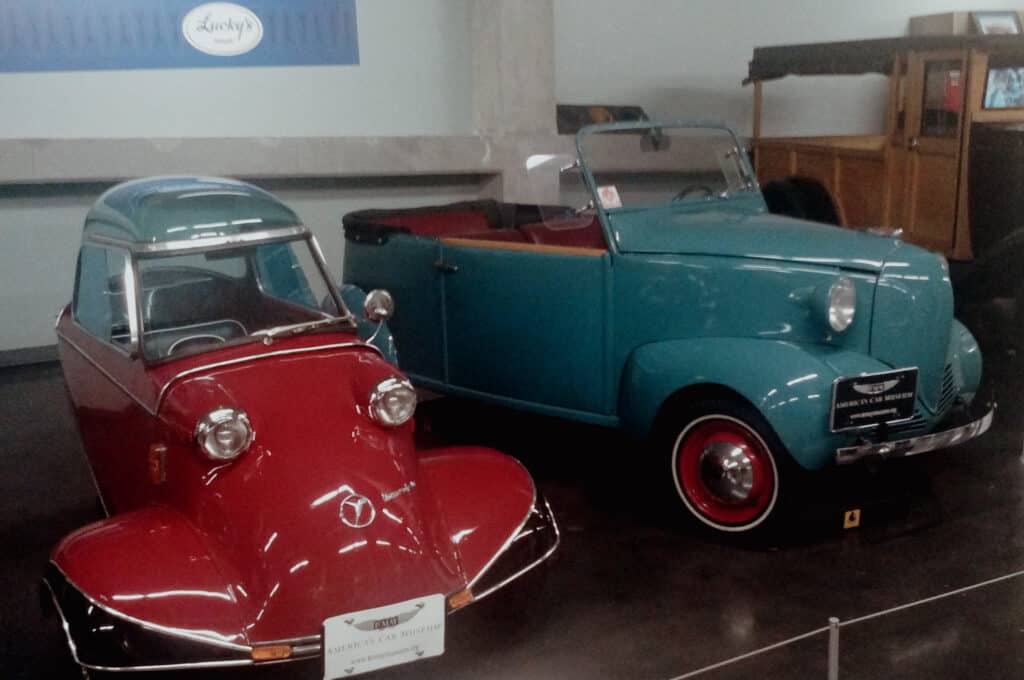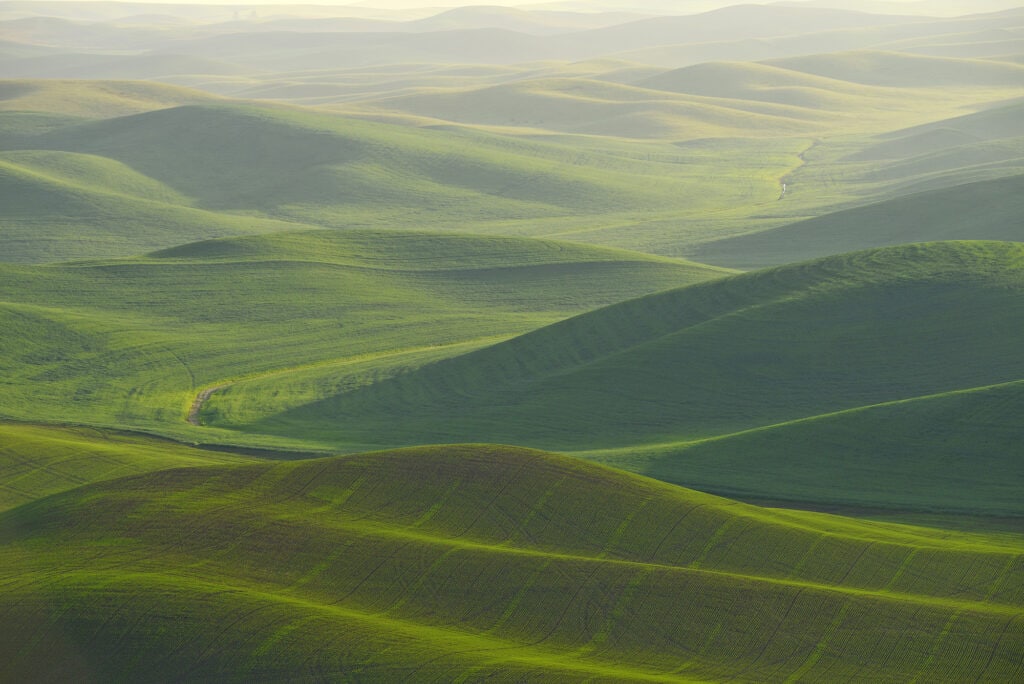Washington State Itinerary: Hit the Highlights with This 10 day Roadtrip
Planning a road trip through Washington State? Okay, well you’re here so you probably are. That’s a great choice! The Evergreen State has so much to offer, from gorgeous national & state parks to charming small towns.
Washington is a fairly large state so to really take in the highlights of the whole state, I recommend 10 days. If you only have a week, you will want to chop out a region, or include some longer driving days with fewer stops.
Washington is a rectangle with a chunk taken out of the corner (and the “crumbs” make up the San Juan islands). It is 240 miles from North to South, and 360 miles at it’s widest point east to west. Source
When planning your road trip, aim for May to early October. This window offers the best weather for outdoor activities and sightseeing. Although you might encounter occasional rain (it is Washington, after all), the temperature is generally mild during these months.
An ideal Washington road trip will cover a mix of urban and natural attractions. Start in Seattle and explore its vibrant city life before heading out to discover the state’s three national parks: Olympic National Park, Mount Rainier National Park, and North Cascades National Park. Along the way, consider stopping by picturesque towns like Leavenworth and taking a dip in Lake Chelan.
Here’s a quick breakdown of the essentials to include on your Washington State road trip:
- Seattle: Experience city life with Pike Place Market, the Space Needle, and the Seattle waterfront.
- Olympic National Park: Explore diverse ecosystems, including the Hoh Rainforest, Hurricane Ridge, and Ruby Beach.
- Mount Rainier National Park: Trek through meadows, forests, and alpine landscapes while witnessing the beauty of the highest peak in the state.
- North Cascades National Park: Beautiful scenic vistas, craggy mountains, and glacial lakes.
- Leavenworth: Visit this charming Bavarian-themed village nestled in the Cascade Mountains.
- Lake Chelan: Unwind in this popular lakeside destination, a great lake for swimming and boating.
- Washington Wine Country: with over 1000 wineries, don’t miss the opportunity to sample a few. The rieslings are especially good.
Driving in Washington is pleasant, thanks to the state’s well-maintained highways and scenic routes. Be prepared for traffic in the Seattle area and on the mountain passes at the beginning and end of weekends, especially in summer months.
I’ve designed this itinerary in an approximate loop. You can start anywhere you would like. In this post, we’ll start in Seattle.
Day 1-2: Seattle
You’ll want to allow one to two days in Seattle. If you enjoy urban sights and sounds, spend two. If you’re itching to get into nature start with one. This itinerary ends up back in Seattle so you’ll have a second chance to catch up on anything you missed.
Space Needle
The Space Needle is one of the city’s most recognizable landmarks and is a remnant of the 1962 World’s Fair. This landmark of the Seattle skyline was renovated in 2018 and is over 600 feet tall. There are now three observation areas, including an open air area.
Floor to ceiling glass walls provide amazing views all around, and even down. A revolving glass floor was installed so you can now see through the floor to the ground 500 ft. below.
If you are squeamish about heights, take a pass on going up the Space Needle and admire it from below.
Chihuly Garden and Glass
The Space Needle is located at Seattle Center and there is more to see and do here. For a different type of glass, visit the Chihuly Garden and Glass.
Dale Chihuly is a world renowned glass artist who was born in nearby Tacoma. If you are planning to visit both this and the Space Needle, look for the combo ticket, good for both attractions on the same day.
MoPop Museum
The other major attraction in this area is the MoPop Museum. This is a must-visit for fans of music, movies, vidoe games, and pop culture in general.
Founded by Microsoft co-founder Paul Allen, the building is difficult to miss. Architect Frank Gehry designed the colorful, undulating building.
All three of these attractions can be accessed from downtown Seattle via the Monorail, also a souvenir from the world’s fair.
Burke Museum of Natural History
Now it’s time to dive into some of Seattle’s rich history and culture. Don’t miss the Burke Museum of Natural History, Washington’s oldest museum (est. 1899). It houses a huge collection of artifacts of birds, mammals, fossils, as well as the cultures of native people’s of the Northwest.
MOHAI
For more local history, the Museum of History and Industry traces the development of the Seattle area including fisheries, railroads, aviation and more. There are both permanent and temporary exhibits housed in a former naval building along Lake Union.
Pikes Place Market
Right in the heart of town is the historic and lively Pikes Market, which offers a variety of fresh produce, flowers, handmade crafts, and dining options. It’s the perfect stop for grabbing a bite to eat or picking up unique souvenirs to remember your time in Seattle. Oh yeah, and to see a fish being flung.
There are plenty more things to do in Seattle, but this will give you a taste of the best of Seattle.
Day 3: Olympic Peninsula
Next, head over to the Olympic Peninsula. This scenic area, much of it near the ocean, offers stunning vistas, unique small towns, and plenty of opportunities for outdoor adventures. I recommend picking 2 of the following and plan for a full day. If you have the time, two days will give you a more relaxed place through this area.
Small towns to explore

From Seattle, head north to Edmonds and catch the ferry to Kingston. If you have Scandinavian roots, spend an hour or two walking around Poulsbo.
Port Townsend is a charming Victorian town along the eastern edge of the peninsula. Plan a couple hours here.
From here make your way to Sequim, known for having the least rainfall in the US and also for its lavender.
If you were a Twilight fan, well you have to at the very least drive through Forks. The movies weren’t filmed here, but that hasn’t stopped the town from capitalizing on it’s 15 minutes of fame.
Olympic National Park

The star of the peninsula is Olympic National Park. Hike through the lush Hoh Rainforest – one of the largest temperate rainforests in the U.S – and look up, look way up at the towering trees covered with moss.
Other highlights include Kalaloch Beach for some beachcombing or simply to enjoy the ocean air, and the views from Hurricane Ridge.
Spend the Night in Ocean Shores
Continue down the western coast of the peninsula to Ocean Shores. This coastal town has miles of wide ocean beaches along the Pacific Ocean, some of which you can actually drive on. Yes, with your car.
There’s not a lot to actually do in Ocean Shores, but it is a popular weekend getaway nonetheless. Unlike the Oregon Coast, there are not many towns right along the ocean in Washington. As in Oregon, I do recommend splurging on an ocean view room if you plan on spending the night. The weather can be windy so you’ll be glad you can stare at the ocean for hours from the comfort of your room.
Day 4: Tacoma
Tacoma has some great museums but if that sort of thing doesn’t interest you, this is a good day to scratch from your itinerary.
At the Washington State History Museum, you can explore the state’s fascinating past through interactive exhibits and multimedia displays.
Don’t miss the chance to walk across the unique Bridge of Glass, connecting the museum to the Foss Waterway with over 30 artworks on display.

Car enthusiasts are in for a treat at the LeMay Car Museum. One of the largest automobile collections in the country, this museum features an amazing array of classics, exotics, and everything in between. I took my kids here a few years back and despite none of us being car fanatics, we really enjoyed it.
While exploring Tacoma, take some time to wander through its various districts, like historic downtown and the waterfront, where you’ll find several dining options, boutique shops, and picturesque views.
Day 5: Washington Wine Country
As we cross over the Cascade mountains into the eastern part of the state, the landscape will change dramatically from lush and evergreen to dry and grassy.
From Tacoma, set your navigation to take Hwy 18 to I-90. This will pop you onto the freeway near North Bend and Snoqualmie. Twin Peaks fans will want to make a little detour here to see Snoqualmie Falls and the Great Northern (I mean Salish Lodge) and in the town of North Bend you won’t miss the cafe that was the Double R.
Yakima is a great starting point for your wine country exploration. If wine is not of great interest to you, this area is also known for its fruit. Chukkar Cherries are chocolate coated dried cherries made in the region.
The real action though is in the Tri-Cities and Walla Walla. And by real, I mean the winery action is concentrated here. There are plenty of tasting rooms to tempt you, but remember, you are on a road trip so choose your designated driver. As you make your way southeast on I-82, you’ll pass through Prosser, which also has a concentration of wineries.
The Tri-Cities are the towns of Kennewick, Richland and Pasco. They are all close to each other which led to their unofficial naming as the Tri-Cities.
Walla Walla is yet another popular destination in Washington Wine Country. Once known primarily for its wheat and sweet onions, Walla Walla has transformed over the past two decades into a premier wine-tasting destination.
Spend the night in Walla Walla.
Day 6: Wine Country to The Palouse

The Palouse region in Washington State offers a colorful landscape of gently rolling hills and picturesque farmlands. As you plan your Washington State itinerary, make sure you carve out some time to explore this beautiful area.
Heading to the Palouse takes extra time, so this is another place you may want to trim your itinerary if needed. If you are a photographer of any sort, I wouldn’t miss this area.
One must-visit spot in the Palouse is Palouse Falls State Park. The stunning 198-foot waterfall is a remnant of ice-age floods and happens to be Washington’s official waterfall. Catch the falls during spring and early summer for high water flow, making it even more impressive.
Traveling through the Palouse calls for a scenic drive along the Palouse Scenic Byway. As you drive, you’ll notice the photogenic rolling hills and farmland that the region is famous for. April to June is a great time to visit for green wheat fields, whereas August to September brings the beautiful wheat harvest.
Don’t forget to visit Kamiak Butte for amazing views over the Palouse. Situated between the towns of Pullman and Palouse, Kamiak Butte majestically rises up from the surrounding hills.
Whether you’re a professional photographer or just looking for that perfect Instagram-worthy shot, be sure to catch the early morning or early evening light at Steptoe Butte, when the sun is low near the horizon.
Day 7-8: Central Washington
You may ask why I chose to ignore Washington’s second largest town of Spokane in this itinerary. It’s nothing personal, but it would have added even more time to this itinerary. Instead we head to the center of the state.
Central Washington is where two of the more popular tourist destinations in the state are located: Leavenworth and Lake Chelan.
Leavenworth, a charming Bavarian-themed town, will make you feel like you’ve been transported to a picturesque village in Germany. Spend a couple hours strolling through its quaint streets, perhaps sample German cuisine, and if your kids (or you) need a break, check out the fantastic mini-golf course at Icicle Ridge.
Backtracking to Wenatchee, head north to Lake Chelan, a pristine 50-mile long lake nestled in the heart of the North Cascades. This lake is just shy of 1500 feet deep, the third deepest in the US.
Meander through town, rent a boat, go for a swim, or just hang out in the city park, which is right along the lake.
If you didn’t get enough wine tasting in earlier, you have another chance here. Lake Chelan is home to several vineyards and wineries.
Day 9:North Cascades Highway
One of the most majestic stretches of highway is the scenic North Cascades Highway. This breathtaking route is part of the Cascade Loop, taking you through mountainous landscapes, old-growth forests, and past glacial lakes.
Be aware that Highway 20 are is closed a good part of the year due to lack of snow removal. It usually closes sometime in November and opens in May. If you are traveling close to these times, check the WSDOT site for road closure status.
A fun stop along the North Cascades Highway is Winthrop, a charming Wild West-themed town with wooden boardwalks, cute shops, and outdoor activities. This is a great place to get out and stretch your legs and maybe grab some lunch.
As you continue your drive, be sure to visit the Diablo Dam, a massive concrete arch dam nestled in the North Cascades. If you have the time, boat tours around the dam are a fun activity.
Ross Lake is a stunningly beautiful reservoir surrounded by the picturesque North Cascades National Park. At the very least, stop at one of the scenic pullouts to admire the view and take a photo or two.
End your day in Skagit Valley, or if you have time, press on to Anacortes for the night which will give you maximum time on Whidbey island for your final day.
Day 10: Whidbey Island
Whidbey Island is a unique spot in the Pacific Northwest. It has some of the laid back island lifestyle of the San Juan Islands, but is not completely cut off from the mainland, so blends in more urban Pacific NW living to the mix.
At the north end of the island, you’ll find the famous Deception Pass Bridge. This iconic structure connects Fidalgo Island to Whidbey Island. As you cross the bridge or walk the nearby trails, take in the breathtaking views of the surrounding landscape. There are pullouts, or if you have time, explore the area from the state park.
Next up, visit the charming town of Coupeville. Known for its historic buildings and scenic waterfront, this town is a perfect place to spend time strolling and enjoying local shops and grab an ice cream.
Near Coupeville, you can explore Fort Casey State Park, where you can find the remains of army fortifications and training camp. And water views. The centerpiece is the charming Admiralty Head Lighthouse.
Travel a bit further south to Langley, home to quaint art galleries and boutique shops. Take a leisurely walk through this peaceful seaside village, and enjoy the local cuisine.
To cap off your Whidbey Island adventure, catch the ferry to Mukilteo. This short ride allows you to relax before getting back on I-5 back to Seattle.
